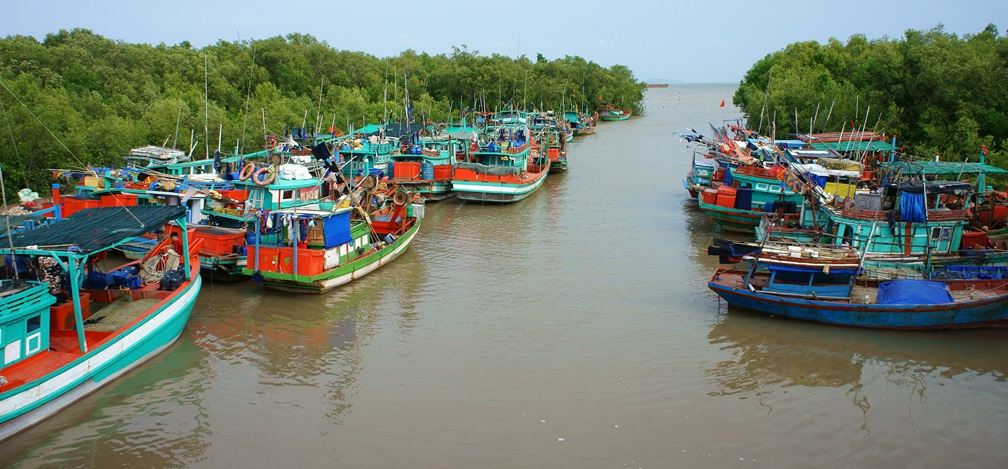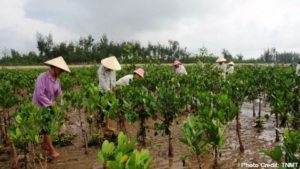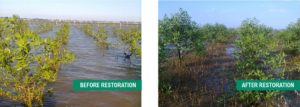The half million people who live in the area along Vietnam’s Tam Giang Lagoon, Southeast Asia’s largest, have been buffeted in recent decades by flooding from the sea, rivers, and heavy rainfall.
In the province, climate change and rapid urbanization have caused particularly unpredictable flooding in Hue, the capital, which is a UNESCO World Heritage Site.
One solution: Restoring mangroves.
Planting mangroves in the lagoons reduces the impacts of flooding on people and properties by breaking wind and waves. It also provides better habitat for aquatic species, leading to better and more sustainable livelihood for local people. Finally, it increases carbon storage and water purification for aquaculture.
In the urban area of Hue, garbage in waterways was making flood season worse.
The Huong River Waterkeeper has been working with the Centre for Social Research and Development in Vietnam, the University of Potsdam in Germany, and Vrije Universiteit in the Netherlands on a program that trains women in the sustainable management and restoration of both mangrove ecosystems and urban water bodies.
The program, ResilNam, has planted more than 13,000 mangrove seedlings around the Tam Giang Lagoons and is addressing restoration, conservation, and sustainable management of natural retention and drainage areas in Hue city.
At the beginning of both projects, Huong River Waterkeeper surveyed 1,100 people in both the Hue area and the rural area around the lagoon to hear the public’s opinions about use of natural resources, their environmental perception, and their overall happiness.
The survey examined the risk perceptions, the current status of the communities, and past flood experience. The organization also conducted seven focus groups with both urban and rural residents about the resources around their communities, the threats from flood to their resources, and the ecosystem services.
With local partner Women Union, events focused mainly on women were hosted in seven targeted communities, performing drama, songs, and quizzes, to raise awareness about disaster risk management and ecosystem-based adaptation.
More than 700 women participated in the events, and third- and fourth-year students in the geology and geography programs at Hue Science College received training.
The result:
- About five hectares (12.35 acres) of mangrove were planted by local communities in two coastal communities;
- Three water bodies in the historical center of Hue City are being restored to increase their water-holding capacity and environmental quality;
- Ecosystem-based adaptation was integrated into the Disaster Management Plans of four wards of Hue City;
- Trainings on community-based tourism were provided to local communities;
- A micro-credit fund supporting women’s livelihoods and ecosystem-based adaptation protection is being installed in two communities; and
- Evidenced-based policy recommendations on flood resilience and the benefits of ecosystem-based adaptation were provided to a wide range of stakeholders.
Featured photo of Vietnamese fishing port in mangroves via Adobe Stock.
This article is by Ellen Simon, an Advocacy Writer at Waterkeeper Alliance, the largest and fastest-growing nonprofit solely focused on clean water. Reposted here with permission by Waterkeeper Alliance.



